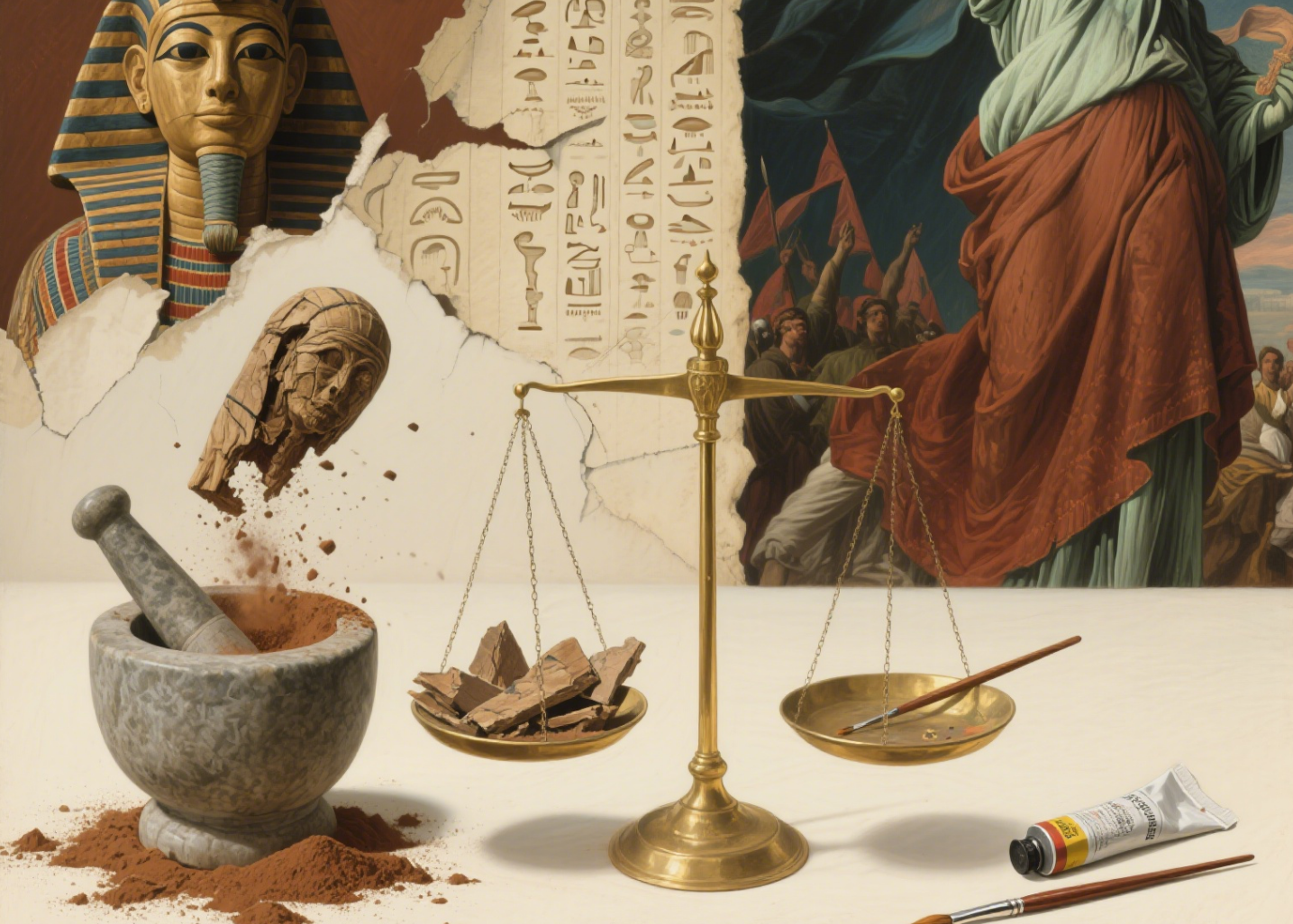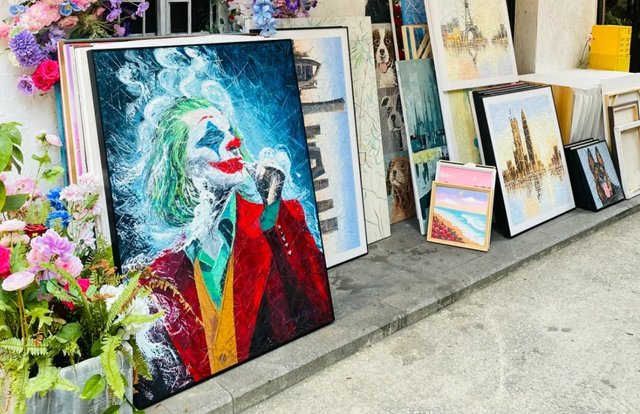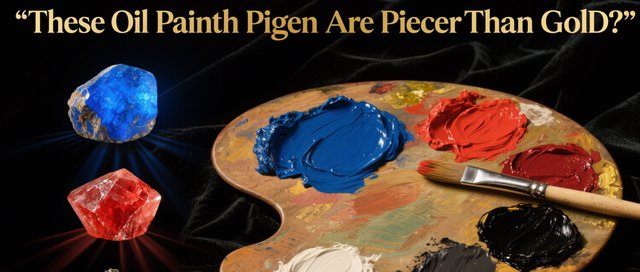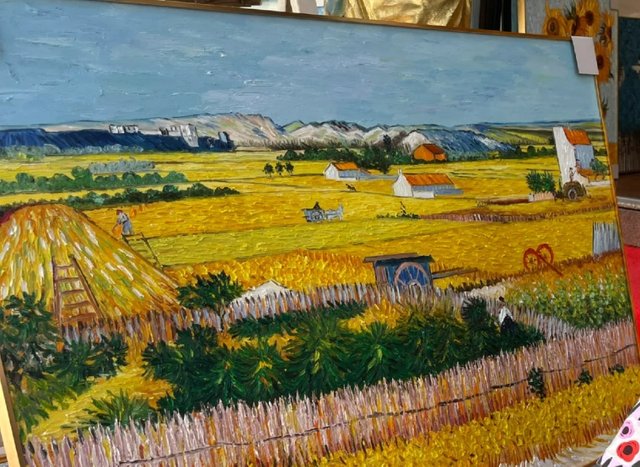10 Bizarre Pigments in Famous Oil Paintings—Mummies, Bugs & More (You Can’t Make This Up)

Behind the beauty of world-famous oil paintings lies a secret: some of their most vibrant colors come from shockingly strange sources. From crushed insects to ancient mummies, Artists throughout history have turned the unlikeliest materials into paint. At theArtPaint, we’re peeling back the layers to reveal 10 of the weirdest pigments ever used in iconic masterpieces—and why they matter.
1. Mummy Brown: Paint Made from Actual Mummies
Yes, you read that right. “Mummy brown” was a popular 19th-century pigment made by grinding up Egyptian mummies (human and animal) with pitch and myrrh. It gave a rich, earthy brown that artists adored.
Famous users? Eugène Delacroix in Liberty Leading the People (1830) and Edward Burne-Jones in his Pre-Raphaelite works. The supply dried up in the early 1900s (thankfully) when mummies became scarce—and ethical concerns took hold. A 1964 study confirmed: samples from old paintings contain traces of human bone.
2. Cochineal Red: Bug Blood for Brilliant Reds
That bright red in Rembrandt’s The Night Watch? It might come from cochineal—a tiny insect that lives on cacti in Mexico and South America. Artists crushed tens of thousands of these bugs to make a vivid crimson pigment.
The Aztecs used cochineal for textiles, and Spanish colonizers brought it to Europe in the 16th century. It’s still used today (look for “carmine” in food labels!), but in art, it’s prized for its fade-resistant vibrancy. Van Gogh’s Sunflowers? His red accents likely owe their pop to these tiny creatures.
3. Lead White: Toxic “Glow” in Classic Portraits
Lead white, a staple in Renaissance art, is made from lead metal, vinegar, and water. It gives a thick, opaque white that reflects light—making skin tones in works like da Vinci’s Mona Lisa look eerily lifelike.
But here’s the catch: it’s highly toxic. Artists who mixed it daily often suffered lead poisoning (think shakes, blindness, even death). Caravaggio, known for his bold use of lead white, may have died from lead exposure. Today, it’s banned in most countries, but restorers still study its unique glow to preserve old masters.
4. Lapis Lazuli (Ultramarine): Semi-Precious Stone for Royal Blues
The deep blue in the Virgin Mary’s robe in Renaissance paintings? That’s lapis lazuli—a rare blue stone mined in Afghanistan. To make “ultramarine” pigment, miners crushed the stone, then spent weeks separating the blue bits from impurities.
It was so expensive that in the 15th century, a gram cost more than a laborer’s monthly wage. Michelangelo left sketches unfinished, waiting for patrons to fund the blue. Vermeer’s Girl with a Pearl Earring uses it sparingly—you can see the cost in every brushstroke.
5. Bone Black: Burned Bones for Velvety Blacks
Renaissance artists loved bone black for dramatic shadows—think Caravaggio’s The Calling of St. Matthew. It’s made by burning animal bones (cow, sheep) in closed ovens, then grinding the charred remains into a powder.
Why bones? They burn to a pure, deep black with warm undertones, unlike charcoal (which fades). Rembrandt used it to create “chiaroscuro” (light-dark contrast), making his figures pop from the canvas. It’s still used today, though modern versions often use synthetic materials.
6. Verdigris: Corroded Copper for Toxic Greens
That sickly green in Jacques-Louis David’s The Death of Marat? It’s verdigris, made by exposing copper to vinegar fumes until it corrodes into a blue-green crust. It’s cheap to make but highly unstable—over time, it turns dark brown or even black.
Artists loved its bright hue, but it’s a restorer’s nightmare. Vincent van Gogh’s Bedroom in Arles originally had vibrant green walls; verdigris degradation turned them muddy. Today, conservators use special coatings to slow its decay.
7. Gamboge: Poisonous Resin for Sunshiny Yellows
Gamboge, a bright yellow pigment, comes from the sap of Southeast Asian trees (like Garcinia hanburyi). But here’s the twist: it’s toxic. Ingesting even a tiny amount can cause vomiting, organ failure, or death.
Artists like J.M.W. Turner used it for sunny skies in his landscapes. Its transparency made it perfect for layering, but it fades quickly in light—why many of Turner’s yellows look dull today. Pro tip: If you own a painting with gamboge, keep it out of direct sunlight.
8. Dragon’s Blood: Resin for Mysterious Reds
No, it’s not from dragons—but “dragon’s blood” sounds cooler than its real source: the sap of the Dracaena tree (found in the Canary Islands and Socotra). It dries into a dark red resin, used for centuries as a pigment and even a medicine.
Famous users? Medieval illuminators in religious manuscripts, and 17th-century Dutch painters for subtle red glazes. It’s still used in some traditional paints today, prized for its rich, earthy tone that deepens with age.
9. Lamp Black: Soot for Inky Blacks
Lamp black, one of the oldest pigments, is simply soot collected from burning oil lamps or candles. It’s pure carbon, making a dense, matte black—perfect for Velázquez’s Las Meninas (1656), where it defines the shadowy corners of the room.
It’s cheap and easy to make (even Michelangelo could mix it at home), but it’s fragile. Over time, it can crack or flake if not sealed properly. Modern artists still use it, though they often mix it with binders to boost durability.
10. Cinnabar (Vermilion): Mercury-Rich Scarlet
Vermilion, that bold red in Chinese imperial paintings and European coats of arms, comes from cinnabar—a bright red mineral loaded with mercury. Grinding it into pigment released toxic fumes, poisoning workers (and sometimes artists).
Artists like Titian used it for dramatic robes and lips, but its toxicity led to its decline. By the 20th century, synthetic reds replaced it. Today, vermilion in old paintings is a hazard for restorers, who must wear protective gear to handle it.
How to Spot These Bizarre Pigments in Art
Want to identify weird pigments in paintings? Here’s how:
Mummy Brown: Look for warm, reddish-browns in 19th-century works—they may have a “powdery” texture under magnification.
Cochineal Red: It glows pink under ultraviolet light (a trick conservators use to detect it).
Lead White: Check for a “chalky” sheen in flesh tones—no modern white matches its luminosity.
Lapis Lazuli: Deep blues that don’t fade; under a microscope, you can see tiny flecks of the stone.
Table: 10 Bizarre Pigments & Their Quirks
| Pigment | Source | Famous Painting | Weirdest Trait |
|---|---|---|---|
| Mummy Brown | Ground Egyptian mummies | Liberty Leading the People | Contained human remains |
| Cochineal Red | Crushed cacti insects | The Night Watch | 70,000 bugs = 1 pound of pigment |
| Lead White | Lead + vinegar | Mona Lisa | Toxic fumes caused artist illnesses |
| Ultramarine | Lapis lazuli stone | Renaissance madonnas | Once cost more than gold |
| Bone Black | Burned animal bones | The Calling of St. Matthew | Warmer undertones than charcoal |
| Verdigris | Corroded copper | The Death of Marat | Turns brown/black over time |
| Gamboge | Toxic tree sap | Turner’s landscapes | Can kill if ingested |
| Dragon’s Blood | Tree resin | Medieval manuscripts | Used as medicine and pigment |
| Lamp Black | Soot from lamps | Las Meninas | Made at home by artists |
| Vermilion | Mercury-rich cinnabar | Titian’s portraits | Poisonous to make and handle |
These bizarre pigments aren’t just oddities—they’re windows into artists’ ingenuity (and sometimes desperation). At theArtPaint, we believe understanding the “how” behind art makes the “what” even more fascinating.
Ready to dive deeper? Explore our guide to identifying historic pigments in your own collection, or learn how modern artists are reviving (safer) versions of these weird classics.
theArtPaint.com—where every color has a story.




